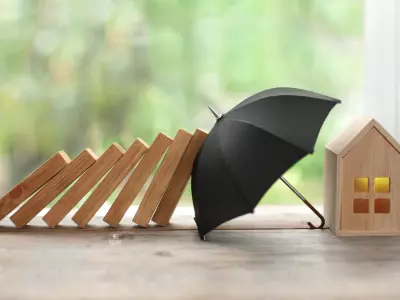What is a Showing? Your Complete Guide to Home Showing Success
Selling your home can feel overwhelming, but understanding the showing process is crucial to attracting serious buyers and securing the best possible offer. Whether you're a first-time seller or need a refresher on best practices, this comprehensive guide will help you navigate showings with confidence and maximize your home's appeal.
Understanding Home Showings: The Basics 📋
A home showing is when potential buyers visit your property to evaluate whether it meets their needs. Showings take place in two main formats: open houses and private appointments. An open house is a scheduled session when anyone can visit without an appointment, typically held on weekends. Private showings, on the other hand, are appointments scheduled through an online system or directly with your real estate agent.
Both types of showings serve the same fundamental purpose – giving buyers the opportunity to experience your home firsthand and imagine themselves living there. The key difference lies in the controlled nature of private appointments versus the open access of weekend open houses.
Three Essential Strategies for Showing Success 🎯
1. Give Buyers Space to Explore
Leave when your house is being shown. This might feel counterintuitive, but buyers prefer to look at homes when they can move around freely without owners present. When you're home during a showing, buyers feel rushed and may hesitate to open closets, examine fixtures closely, or have honest conversations about the property with their agent.
Your presence can also make buyers uncomfortable about discussing potential changes or concerns they might have. By stepping out, you create an environment where buyers can truly envision the home as their own and take the time they need to make an informed decision.
2. Maximize Availability and Flexibility
Make your house as available as possible for showings. While accommodating showing requests may be inconvenient, buyers who can't see a property when they're eager may cross it off their list entirely. In today's competitive market, timing is everything.
Flexible scheduling can be the difference between a sale and a missed opportunity. Buyers often have limited windows due to work schedules, childcare, or coordination with their agent's availability. The more accommodating you can be, the larger your pool of potential buyers becomes.
Consider that serious buyers may be looking at multiple properties in a single day or weekend. If your home isn't available when they're ready to view it, they may move on to other options and never circle back.
3. Embrace Feedback for Continuous Improvement
Listen to buyer feedback about ways you can make your home more appealing for future showings. This information is gold – it comes directly from your target market and highlights specific areas where small changes could yield significant results.
Common feedback might include adjusting lighting, addressing minor repairs, or reconsidering your pricing strategy. Don't take feedback personally; instead, view it as valuable market research that can help you refine your approach and ultimately sell faster.
Last-Minute Preparation: Your Pre-Showing Checklist ✅
The hour before a showing is crucial for creating the perfect first impression. Follow this showing preparation checklist to ensure your home looks its absolute best:
Essential Tasks:
- Take out all garbage and recycling
- Make every bed with fresh, crisp linens
- Clear and dust all surfaces, including countertops and tables
- Remove pets and put away food bowls, toys, and litter boxes
- Set temperature to a comfortable 68-72°F
- Place fresh towels in bathrooms (white towels create a clean, spa-like feel)
- Ensure all toilet seat lids are down
- Turn on lights throughout the house and open blinds and curtains for maximum natural light
These simple steps transform your living space into a move-in-ready showcase that allows buyers to focus on your home's best features rather than daily living details.
Safety First: Protecting Yourself and Your Property 🔒
Home showing safety should never be overlooked. Protecting your valuables, personal information, and family's security requires advance planning and consistent execution.
Secure Your Valuables: Remove or lock away keys, credit cards, jewelry, and other valuable items. Antique, rare, or expensive home décor should also be stored safely to prevent accidental damage or theft during showings. Even well-intentioned buyers can accidentally knock over delicate items while exploring your space.
Protect Personal Information: Remove bills, invoices, credit card statements, and anything displaying your Social Security number or other sensitive data. Family photos and items labeled with names should also be put away. Turn off computers and secure any documents that could compromise your privacy or identity.
Handle Medications and Weapons Safely: Remove prescription medications from medicine cabinets and bedside tables. Any firearms, knives (including kitchen knife blocks), and other weapons should be removed from sight or securely locked away.
Verify Legitimate Showings: Never let strangers into your home without a scheduled appointment. All showings should be arranged through your realtor or showing request system. Legitimate agents will use the Sentrilock system – don't allow entry without proper verification. If someone appears unexpectedly, refer them to your agent immediately.
Maintain Property Safety: Clear driveways and sidewalks of ice, snow, and debris to protect yourself from liability. Secure all pets during showings – taking them with you is always the preferred option.
Open House Strategy: Maximizing Weekend Traffic 📅
Open house scheduling typically occurs the weekend your home becomes active on the MLS. These events may be held on Saturday, Sunday, or both days depending on market conditions and buyer interest. A professional agent will be present to greet potential buyers, answer questions, and collect contact information for follow-up.
Open houses serve multiple purposes beyond just showing your home. They generate buzz in your neighborhood, attract buyers who might not have scheduled private showings, and create a sense of urgency among serious prospects. The presence of multiple buyers during an open house can also spark competitive interest.
Creating the Perfect Showing Environment 🌟
Buyer experience during showings significantly impacts their emotional connection to your property. Small details make a substantial difference in how buyers perceive your home's value and livability.
Lighting plays a crucial role in creating ambiance. Natural light makes spaces feel larger and more inviting, while strategically placed lamps can highlight architectural features and create cozy atmospheres in the evening. Fresh air is equally important – open windows when weather permits to eliminate cooking odors, pet smells, or stuffiness.
Consider subtle touches that appeal to the senses: fresh flowers, the aroma of baked cookies, or soft background music can create positive associations with your property. However, avoid overwhelming scents or loud music that might distract from your home's features.
Ready to Show Your Home Like a Pro? 🚀
Successful home showings require preparation, flexibility, and attention to detail. By implementing these strategies, you'll create positive experiences that encourage buyers to envision your house as their future home.
Remember, every showing is an opportunity to generate interest and potentially receive an offer. Stay organized, remain flexible with scheduling, and always prioritize safety throughout the process.
Love these insider tips? Give us a like on Facebook for more expert real estate guidance and local market updates! 👍
Categories
Recent Posts















